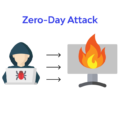As organizations become increasingly reliant on technology, it becomes essential to assess the security of their IT infrastructure. An IT security audit is an essential component of any organization’s cybersecurity strategy. A security audit evaluates current security practices, identifies potential risks, and provides recommendations for improving the organization’s overall security posture.
In this article, we’ll discuss the basics of an IT security audit and provide a comprehensive guide to conducting one. We’ll cover what goes into an audit, how to plan and execute one, and how to use the results to improve your organization’s cyber defense.
What Is an IT Security Audit?
An IT security audit is a comprehensive assessment of an organization’s security posture and IT infrastructure. It helps organizations identify and assess existing vulnerabilities in their networks, applications, and connected devices. An IT security audit typically consists of five steps: defining objectives, planning the audit, performing the auditing work, documenting the results of the audit, and taking action based on those results.
When conducted regularly, a security audit can help ensure that all data within an organization is secure and compliant with external regulations and requirements. It also helps assess new risks that emerge over time due to changes in technology or the environment. Audits can also be used to track progress toward meeting specific objectives or goals related to cybersecurity.
How to Plan an IT Security Audit
Before starting any kind of audit – whether it’s financial or information technology – it’s important to have a plan in place that outlines what will be done during the process. An effective plan for an IT security audit should include:
• The scope of the assessment – what systems will be assessed? What areas need more attention?
• The type of assessment – will it be manual or automated? Will it focus on technical aspects only or include compliance requirements as well?
• The timeline for completing each step – when will each phase begin and end? How often will assessments take place?
• Who’s involved – who should be consulted during each stage of the process? Who will do most of the work? Who’s responsible for ensuring that all tasks are completed correctly?
• What resources are needed – what type of hardware/software is required for this project? Are there any special tools or techniques needed? How much money needs to be allocated for this project?
Once you have a plan in place, you can move forward with conducting your IT security audit.
How To Perform An IT Security Audit
Conducting a thorough IT security audit involves assessing different aspects of your organization’s infrastructure – from physical hardware components like servers and routers to software systems like databases or web applications. Here are some key steps you should take when performing an IT security audit:
• Identify existing vulnerabilities by scanning networks and systems using specialized tools such as vulnerability scanners or penetration testing software. This helps you identify weak spots in your network before attackers take advantage of them!
• Analyze user access rights by examining who has access to which resources within your organization’s network(s). This helps prevent unauthorized users from gaining access to sensitive data or systems without permission.
• Evaluate system configurations by verifying settings across various components such as firewalls, routers, etc., making sure they are configured securely according to industry best practices.
• Monitor system logs by using log management tools that collect logs from various sources (servers/applications) on a regular basis so they can be reviewed periodically for suspicious activity/anomalies that may indicate attempted intrusions or other malicious activity such as data exfiltration attempts by threat actors already inside your network(s).
By following these steps carefully during your audits – along with any other measures necessary depending on your specific environment – you can ensure that all components are secure against potential attacks from outside sources as well as internal threats like disgruntled employees who may have malicious intent towards your company’s data/assets (e.g., stealing customer information). Taking Action After Your Audit Is Complete
Once you’ve completed your auditing process and documented results from each step above (as well as other relevant tests/checks), you need to take action based on those findings! Examples of actions taken after successful audits include implementing remediation procedures (for example fixing identified vulnerabilities), training employees in data compliance/security awareness programs (to strengthen organizational culture around cybersecurity), strengthening password policies across all systems (to reduce the risk posed by weak passwords), etc. Taking proactive steps like these ensures that your organization is better prepared against future cyberattacks while staying compliant with external regulations/requirements at all times!

Source: rackwareinc.com
Security Audit: An Overview of IT Security Audits
An IT security audit is an extensive assessment of an organization’s cybersecurity infrastructure and defenses. It is designed to identify any potential weaknesses or vulnerabilities that could be exploited by malicious actors, as well as to ensure compliance with applicable laws and regulations. The audit involves a comprehensive review of all the components that make up an IT system, including network architecture, physical security measures, data encryption methods, user authentication processes, access controls, and more. By conducting a security audit, organizations can ensure that their IT networks are properly defended against threats such as cyber-attacks, data breaches, malicious software infections, and other cybersecurity incidents.
Key Elements of an IT Security Audit
An IT security audit is an assessment of the overall security posture of an organization, with the aim of identifying areas where security can be improved. The key elements of an IT security audit are as follows:
1. Assessing the organization’s existing IT infrastructure, including hardware, software, and network components. This involves evaluating existing security measures such as firewalls, access control lists, and encryption protocols.
2. Analyzing risk and vulnerability levels by examining system logs and user activity reports. This helps identify any potential threats or weaknesses in the system that need to be addressed.
3. Reviewing policies and procedures related to security management, including incident response plans, data privacy policies, and user access control measures. This helps ensure that all relevant regulations are being adhered to and that best practices for data protection are in place.
4. Evaluating personnel training regarding data security policies, procedures, and processes to ensure all staff is aware of their responsibilities with regard to protecting sensitive information.
5. Testing system defenses against cyber-attacks using specialized tools such as penetration testing or ethical hacking techniques to assess how well the organization’s networks can withstand malicious attacks from outside sources.
Difference Between IT Audit and IT Security Audit
The primary difference between an IT Audit and an IT Security Audit is the scope of the assessment. An IT Audit focuses on evaluating the effectiveness and efficiency of information technology systems, processes, and procedures within an organization. It evaluates how well systems are used to meet their intended purpose, as well as how effective their security policies are. An IT Security Audit, on the other hand, is a more comprehensive assessment that evaluates how well an organization meets external regulations and requirements related to information security. It looks at the overall security posture of the organization and identifies areas where improvements can be made. Additionally, it examines any potential vulnerabilities in the system that could be exploited by malicious actors.
Security Audit Coverage
A security audit covers a wide range of topics related to the security of an organization’s data and systems. This includes evaluating the effectiveness of existing security policies, processes, and controls; identifying any potential vulnerabilities or weaknesses in the system; testing security systems to ensure they are functioning properly; and monitoring access to data and other sensitive information. Additionally, a security audit may include penetration testing, vulnerability scanning, code reviews, application testing, and other forms of assessment. The goal of a security audit is to help an organization protect its data from unauthorized access by identifying potential areas of risk.
Technical Skills Required for IT Audit
IT auditors must have a range of technical skills to properly assess the security, accuracy, and reliability of IT systems. These include an understanding of operating systems, security testing, risk assessment, report writing, and secure coding practices.
Proficiency in popular operating systems platforms such as Windows and Linux is essential for auditing IT systems. Auditors should understand how these platforms are configured and how they interact with applications. Additionally, they must understand the security best practices associated with each platform.
Auditors must also have experience in security testing to identify vulnerabilities and weak points in IT systems. This includes running penetration tests and scanning for common exploits. Knowledge of secure coding practices is also important to ensure that applications are built securely from the ground up.
Finally, IT auditors should have experience with risk assessment techniques to identify where organizations are most exposed to financial or reputational harm due to cyberattacks or data breaches. They should also be able to write clear reports outlining their findings and recommendations for improvement.
The Difference Between Cyber Security and IT Audit
The primary difference between cyber security and an IT audit is that cyber security focuses on preventing, detecting, and responding to malicious activity while an IT audit evaluates the effectiveness of a company’s technology-related controls. Cyber security examines the system’s components to detect vulnerabilities and prevent attacks while an IT audit assesses the system’s performance and ensures that it meets pre-defined standards. Cyber security focuses on protecting confidential data while IT audit focuses on ensuring that the system performs as intended and is able to generate accurate reports. In addition, cyber security requires proactive steps such as patching systems regularly and monitoring for malicious activities while IT audit requires periodic testing to ensure compliance with regulations.
Steps of an IT Audit
1. Planning: The first step of an IT audit is to plan the audit. This includes defining the objectives, scope, and timeline of the audit, as well as selecting any personnel or resources needed to complete the audit.
2. Tests of Controls: During this phase, auditors evaluate existing controls to ensure they are effective in preventing errors or fraud. Auditors will also assess how the IT department operates and how it enforces security standards and procedures.
3. Substantive Tests: This phase involves assessing the accuracy of data and transactions by examining systems, databases, applications, networks, and other IT resources that support business processes.
4. Audit Completion/Reporting: Once all tests are completed, auditors will generate reports on their findings and provide recommendations for improvement if necessary. The final report should include a summary of their findings and any recommendations for improvement.
The Relationship Between IT Audit and Cyber Security
Yes, an IT audit is considered to be a form of cyber security. IT audit is conducted to assess an organization’s IT infrastructure, policies, and procedures, and ensure they are working effectively. It is designed to identify potential vulnerabilities that could lead to a data breach. It typically involves testing networks and systems for weaknesses, evaluating the security of applications, verifying the security of data storage, and assessing the overall security posture of an organization. Ultimately, IT audit helps organizations protect themselves against cyber threats by identifying weaknesses in their systems and providing recommendations on how to address them.
Conclusion
In conclusion, IT security audits are an essential part of any organization’s risk management strategy. By proactively identifying and addressing vulnerabilities, organizations can protect critical data, create better security policies, and be better prepared to respond to threats. Regular security audits help ensure that employees are following security best practices and can catch new weaknesses before they become an issue. Ultimately, IT security audits provide organizations with the insight they need to ensure their systems are secure and compliant with industry regulations.








